Monday Morning Update 8/21/17
Top News
The New York Times reviews patients recording their doctor visit for their later review.
The article notes that one family practitioner records patient visits himself, then uploads the annotated recordings to a secure web platform that patients and family members can review at any time. He says the de-identified recordings could help researchers find ways to improve medical communication.
University of Texas Medical Branch at Galveston buys recorders and batteries in bulk and offers them to cancer patients, with 300 of them accepting the devices each year. The program will be expanded to internal medicine and geriatrics.
The article describes how a neurosurgeon records his visits on an iPad and posts them to a platform he created called Medical Memory. He says half of the patients watched their videos more than once and its use has cut the practice’s malpractice insurance costs in half.
A recently published research proposal describes a Dartmouth project to develop a platform that would store visit recordings and use machine learning to tag their specific elements, such as the treatment plan.
Reader Comments

From Nutmeg Grater: “Re: Allscripts. This is their new, top-secret EHR. Two years of work and just recently deemed not ready to demo at ACE. I wonder if they forgot about this website?” The Care Otter website doesn’t mention Allscripts specifically, but (a) some of the folks whose bios are listed hail from there, and (b) I found a cached copy of a since-removed API documentation page whose FHIR API license agreement lists Allscripts as the licensor. The company touts its “bleeding edge technology” and data science. The group’s address is, per Google Maps, a defunct steakhouse in Litchfield, IL. Their job postings list technologies such as Azure, Power BI, Apple’s Swift 3, the Xamarin moble app development platform, and reactive programming. Care Otter’s LinkedIn lists 56 employees, including former Allscripts engineering SVP Jeff Franks as president. Here’s a YouTube video highlighting Silicon Valley aspirations with dogs running around the office, free snacks at the bar, impromptu kite-flying, and collaborative slouch-ready furniture in what they call the “SiloCorn Valley.” I like the strategy of putting a creative group in a freewheeling setting far from corporate overseers, although the ultimate success measure is whether Care Otter earns market share.
From ACD_Fan: “Re: Epic. Our local hospital seems to be moving to it under the Community Connect program of Parkview Health Systems in Fort Wayne, IN. Another Paragon client jumps ship.” DeKalb Health’s web page says it is moving to Epic.
![]()
From Turnaround Failure: “Re: Presence Health. Word on the street is that Presence Health will announce Monday its merger with Ascension. Bet that Advocate, North Shore, and Northwestern will have something to say about that.” Unverified. The struggling 11-hospital Presence, created by the 2011 merger of Provena Health and Resurrection Health Care, announced plans earlier this month to sell two downstate hospitals to OSF HealthCare. I think Presence uses Epic, while Ascension is mostly Cerner.
HIStalk Announcements and Requests

I ran a reader’s query last week about the status of Cerner PowerInsight. The company provided this response, although the referenced HealtheEDW does not appear anywhere I could find on Cerner’s website:
PowerInsight Explorer is still available and widely used across Cerner’s US and global client base as a real-time reporting tool for Cerner Millennium. Cerner’s go-forward enterprise data warehouse, HealtheEDW, was released in 2011 and built on the source-agnostic cloud platform HealtheIntent. PowerInsight EDW will be supported in the US and sold globally as Cerner transitions legacy clients to HealtheEDW and stands up the cloud platform in global markets.
I received these responses to the reader’s question about FHIR specs:
- Much better than HL7’s old-style PDF bundles. Faster to navigate, easier to reference in our own documentation.
- I’m confused by what Sweet Ride is asking. I’ve done next to nothing with FHIR, having spent most of my career working with 2.x and V3/CDA, so maybe I’m looking at the wrong specs but the FHIR specs I’m looking at on hl7.org (starting with http://hl7.org/fhir/) are HTML and seem to me to be well-organized and easy to use. It’s definitely different than the PDFS HL7 used to use but I find it easier to navigate than previous specs – particularly V3/CDA.
- Anything is better than the current format.

It’s probably a lost cause trying to take the term “cloud-based” back to its original technical meaning as companies have turned it into a loosely-defined marketing slogan. Clustered says that while it really just means “in our basement instead of yours” and marketing departments have abused the term, it’s still accurate although incomplete, requiring prospects to perform due diligence.
New poll to your right or here: which of these inpatient EHR vendor companies do you admire most? I’ve hidden the interim results this time to hopefully decrease desperate ballot box stuffing. Feel free to add a comment explaining your choice.
Welcome to new HIStalk Platinum Sponsor Image Stream Medical. The Littleton, MA-based company’s technology connects providers with visual information and collaborative insight that allows them to make better decisions and to spend more time caring for patients. Solutions include procedure space integration, procedure recording, medical virtual presence for teaching, live video streaming, real-time room status, clinical video and image content management, video editing, and integrating procedure and video images with EHR, PACS, VNA, and other repositories to create a unified patient record. Healthcare systems benefit from increased clinical efficiency, reduced risk, improved patient safety by automating tasks, and reduced infection risk in allowing observers to participate outside the procedure room. The company, acquired by Olympus Corporation of the Americas in May 2017, just announced MedPresence, a virtual presence solution that allows surgical and interventional clinicians to connect and collaborate virtually. Thanks to Image Stream Medical for supporting HIStalk.
This Week in Health IT History
One year ago:
- Gartner predicts via its Hype Cycle that the technologies that will most quickly find mainstream adoption are machine learning, software-defined anything, and natural language question answering.
- Promedica (OH) attributes its swing to a big first-half loss on the cost of implementing Epic, while MD Anderson Cancer Center (TX) also blames Epic-caused higher expenses and lower patient revenue for its 77 percent drop in net income.
- A Medscape physician EHR survey finds that Epic is the most-used by far, Allscripts falls from #2 to far down in the list in user scoring, the VA’s VistA is the top-rated EHR overall, and VistA and Epic lead the pack in connectivity.
Five years ago:
- NextGen President Scott Decker resigns following the addition of dissident shareholder representatives to the board of parent company Quality Systems.
- Walgreens announces plans to deploy an customized version of Greenway PrimeSuite as its pharmacy EHR.
- University of Michigan Health System names Sue Schade as its new CIO.
Ten years ago:
- Congress gives the VA $1.9 billion for EMR and DoD integration, with the Appropriations Committee calling for blocking any EMR expenditures for software that won’t work with DoD systems and for the VA to work with private software companies to improve interoperability and mobile apps.
- West Penn goes live on Eclipsys.
- Misys licenses iMedica’s PM/EHR to get a small-practice system to market quickly.
Weekly Anonymous Reader Question
I got a ton of responses to “best musical group or performer seen live,” so I will excerpt (the asterisked ones were named more than once):
- Prince*
- Depeche Mode*
- Bruce Springsteen*
- Rolling Stones*
- Led Zeppelin*
- Moody Blues*
- Garth Brooks*
- U2*
- Pink Floyd*
- Billy Joel and Elton John*
- Paul McCartney*
- Adele*
- Santana*
- Radiohead
- Nine-Inch Nails
- AC/DC
- Journey
- Tedeschi Trucks Band
- My Morning Jacket
- LCD Soundsystem
- The Who
- Living Colour
- Nektar
- Grateful Dead
- Genesis
- Annie Lennox
- Jason Mraz
- Dead Kennedys
- Earl Scruggs Review
- Train
- Chicago
- The Wiggles
- Soundgarden
- Bryan Ferry
- Lindsey Buckingham
- Ray Charles
- Paco de Lucia
- John Prine
- Arcade Fire
- Ed Sheeran
- Mark Knopfler
- Tragically Hip
- Meatloaf
- The White Stripes
- Kid Rock
- Styx
- Beyonce
- James Taylor
- Steve Wonder
- Godspeed You! Black Emperor
- Kendrick Lamar
- The Clash
- Sarah Brightman
- John Mayer
- Phish
- Great Big Sea
- Shinedown
- Alanis Morrisette
- Red Hot Chili Peppers
- Jethro Tull
- John Hiatt
- Steve Winwood and Traffic
- Savages
- Jimi Hendrix
- Neil Young with Booker T and the MGs
- Uncle Tupelo
- The Old 97s
- Gladys Knight and the Pips
- Big Head Todd and the Monsters
- Coldplay
- Brian Wilson
- J. Geils
- Air Supply
- Guns N Roses
- Clarence Clemons
- The Rippingtons
- Metallica
- Lynyrd Skynyrd
- Bee Gees
- Iron Maiden
- Frank Zappa
- Melissa Etheridge
- The Eagles
- Jimmy Buffett
- Aretha Franklin
- Van Cliburn
- Dixie Chicks
- Gil Shaham
This week’s question: what is the most memorable, creative, or effective thing you’ve seen a HIMSS conference exhibitor do to drive business, establish relationships, or create buzz?
Last Week’s Most Interesting News
- HIMSS Analytics data shows Cerner holding a slight edge over Epic in overall US hospital count, but Epic handily leading in large-hospital customers, total beds served, and doctors that use its ambulatory EHR.
- Google buys Senosis Health, which is developing smartphone sensors and apps for diagnosis jaundice, reduced lung function, and low hemoglobin.
- NIH awards Children’s Hospital of Philadelphia an NIH grant to mine databases to look for causes of pediatric cancer and birth defects.
Webinars
September 13 (Wednesday) 1:30 ET. “How Data Democratization Drives Enterprise-wide Clinical Process Improvement.” Sponsored by: LogicStream Health. Presenter: Katy Jones, program director of clinical support, Providence Health & Services. Providence is demonstrating positive measurable results in quality, outcomes, and efficiency by implementing clinical process improvement solutions in arming operational and clinical stakeholders with unlocked EHR data. Providence’s army of process engineers use their self-service access to answer questions immediately instead of waiting for reports to be written and double checked for possibly inaccurate information. The presenter will describe practical applications that include antibiotic stewardship, hospital-acquired infections, and comprehensive knowledge management.
Previous webinars are on our YouTube channel. Contact Lorre for information on webinar services.
Acquisitions, Funding, Business, and Stock
Investment research firm Hedgeye picked up the rumor I ran last week from reader At Last an Alias that Baylor Scott & White will replace Allscripts with Epic starting in the next few weeks, saying another research company confirmed the rumor with Allscripts. The firm’s tweets say that Allscripts has lost two of its top five Sunrise customers in the last six months (New York-Presbyterian and now BSW, assuming they have confirmed the rumor), with those two health systems representing 12.5 percent of all US Sunrise business with their 19 hospitals and 7,000 licensed beds. They tweeted out the graphic above (click to enlarge) that shows the top 25 Sunrise customers and indicating which are at risk. The elephant in the room is obviously Northwell Health (the former North Shore-LIJ) which along with University Hospitals are the only two of the top six Sunrise customers that haven’t already announced plans to replace it with Epic or Cerner. The former Baylor Health System is the only part of BSW that still runs Allscripts following its 2013 merger with Epic-using Scott & White.

Meanwhile, Hedgeye speculates on the identity of the puzzlingly unnamed six-hospital system that Allscripts announced as a new Sunrise customer in its August 3 earnings announcement. NantHealth’s Patrick Soon-Shiong bought struggling six-hospital Verity Health in July. The company later worked out a deal that allowed Allscripts to trade back its devalued $200 million investment in NantHealth for the FusionFx software suite and NantHealth’s promise to buy Allscripts products. The Allscripts 10-Q form says its Q1 bookings growth was almost entirely driven by “a large new multi-year relationship with a commercial partner that was executed during the second quarter of 2017.”
Decisions
- Enloe Medical Center (CA) will switch from Meditech to Epic in 2018.
- Erlanger Bledsoe Hospital (TN) will go live on Epic in October 2017.
- Erlanger East Hospital (TN) will go live on Epic in 2017, replacing McKesson.
- Virtua Memorial Hospital (NJ) will go live on Epic in the spring of 2018.
These provider-reported updates are supplied by Definitive Healthcare, which offers a free trial of its powerful intelligence on hospitals, physicians, and healthcare providers.
Announcements and Implementations
A new Reaction report from a survey of 119 people (most of them lab managers and directors) covers trends in laboratory information systems, concluding that best-of-breed LIS vendors such as Sunquest, SCC, and Orchard are at significant risk as a shocking 60 percent of LIS customers overall say they are considering replacing systems, with many of those likely to move to their EHR vendor’s offering in enterprise decisions made by executives instead of lab managers. Sunquest is listed as having the highest risk of contract replacement and the lowest net promoter score among the best-of-breed vendors as well as the lowest mindshare among all vendors that offer LISs, while the report notes that Epic has massive mindshare despite its KLAS-leading LIS offering that is just five years old. Orchard leads the NPS scores of all vendors by far, but it’s a tiny sample size. The report concludes, “It’s also not unreasonable to expect continued (although modest) consolidation, as the writing may be on the wall for some best-of-breed LIS vendors, causing them to seriously consider finding suitors among the EHR vendors.” Allscripts is now in the LIS business with its acquisition of McKesson EIS that includes a lab system as well as a blood bank module that Epic says it will never develop. Allscripts has previously offered Orchard LIS to its Sunrise customers.
Technology
Amazon releases a developer toolkit for Alexa that provides programming interfaces for adding hands-free voice control to software products.
Other
An Atlanta-area business paper profiles the use by several area WellStar hospitals of Epic’s MyChart Bedside, in which the hospitals give patients a tablet that contains care team bios, meds, lab results, vital signs, and treatment schedules.

MaineGeneral Medical Center (I detest that spelling) blames a technical error for its sending of nearly 10,000 bills of under $25 to a collection agency.

US tourists are apparently being served tainted or drugged alcohol at upscale, all-inclusive resorts in Mexico’s Riviera Maya, sometimes resulting in crimes being committed against them. The story says nobody in Mexico really seems to care, including the resorts themselves, as visitors are assaulted, extorted by police, fall victim to drowning, or are regaining consciousness only to find unexplained broken bones or other injuries and no memory of the preceding hours, all after minimal alcohol consumption and often with simultaneous symptoms among group members. The US State Department has issued a Mexico travel warning about tainted alcohol and the Mexican government confirms that up to half the alcohol consumed there is produced illegally. Tourists report frustration at the indifference of the resorts when they report problems, the upfront cash required to obtain medical treatment at hospitals, and the fact that nobody ever gets arrested even though the tourists file reports in person with the local police departments.
When injured tourists turned to police, an instinctive step for many Americans, they were often stonewalled again. For starters, resorts in Mexico don’t typically call law enforcement to the scene. Vacationers have to take complaints to the police station. The few who did encountered further indifference: Nothing to investigate. It was an accident. You were drunk. In one case, a woman who was sexually assaulted by a hotel security guard … said the police chief overseeing her case seemed genuinely concerned and determined to help her … The chief tried to get the Iberostar Paraiso Maya resort to cooperate with the investigation and to provide photos of security staff. Frias was shot dead in his squad car months later. Local news reports said it was likely a killing meant to intimidate law enforcement.

The money-losing visiting health service of Mid-Columbia Medical Center (OR) says its use of a non-Epic EHR while the hospital uses Epic is hard since physician care plans don’t move electronically, but the service is still not willing to spend $750,000 to implement Epic.


I’m surprised that the names and logos of these healthcare services companies haven’t earned the attention of Epic’s legal team.
Potential jurors being interviewed by attorneys involved in the securities fraud case against pharma bro Martin Shkreli had some interesting comments recorded, although perhaps some of them were just grandstanding to get out of jury service:
- I’m aware of the defendant and I hate him.
- He’s the most hated man in America. In my opinion, he equates with Bernie Madoff with the drugs for pregnant women going from $15 to $750.
- I just walked in and looked right at him and that’s a snake.
- I believe the defendant is the face of corporate greed in America.
- I don’t think I can [judge him impartially] because he kind of looks like a dick.
- The only thing I’d be impartial about is what prison this guy goes to.
- I just can’t understand why he would be so stupid as to take an antibiotic which HIV people need and jack it up 5,000 percent. I would honestly, like, seriously like to go over there …
- It’s my attitude toward his entire demeanor, what he has done to people. And, he disrespected the Wu-Tang Clan.
A hospital visitor in China is detained by police after posting online criticism of the price of the cafeteria’s meals, saying he “wanted to faint” when he saw the small portion of his $2 bowl of noodles, adding, “Poor quality, expensive prices, little food – is this still a hospital for the people?” After the man’s arrest, local police reminded Internet users that it is illegal to post false information online although they didn’t actually say he was lying. The article reminds me of how weird hospital cafeterias are: (a) they are just about the only place other than grocery store food bars to sell some foods by weight; (b) they don’t allow free refills on their overpriced drinks; (c) they are often outsourced to companies accustomed to serving low-bidder meals to prisoners and high school students, outfitting their unsmiling employees in jaunty, chef-like attire to suggest culinary artistry instead of the heating of frozen institutional entrees; and (d) they are passionate about portion control but indifferent to taste, customer experience, and wiping down tables and chairs between occupants, some of them wearing scrubs bearing materials you would not want near you while eating. There’s a challenge for you – send me photos of whatever you find weird about your hospital’s cafeteria.
Sponsor Updates
- Redox will exhibit at Health:Further August 23-24 in Nashville.
- Impact Advisors employees donate 385 pounds of personal care products to troops deployed overseas.
- The SSI Group will exhibit at the NC HFMA Summer Institute August 23 in Myrtle Beach, SC.
- Sunquest Information Systems will host its users group meeting August 21-24 in Tucson, AZ.
- Visage Imaging publishes a new whitepaper, “Can you? Visage can. Volume 1: Speed.”
- Medecision is named to the 2017 IDC Health Insights HealthTech Rankings Top 50.
Blog Posts
- What the new changes to MU and IQR mean for you (Advisory Board)
- 70 Healthcare Books for People Who Want to Understand the Industry (Redox)
- 5 Methods to Prevent Colleagues from Being Backseat Drivers (Salesforce)
- MACRA Challenges for Hospitals in 2018 (The SSI Group)
- Your Online Reputation: Learn How to Own It, Work It, and Reap the Rewards (Solutionreach)
- NACDS Total Store Expo: Pharmacies are increasingly playing a critical role in driving interoperability in healthcare (Surescripts)
- Jumping the hurdles to value-based care (Verscend Technologies)
- Close collaboration creates solid solutions. (Voalte)
- The Evolution of 911 and PSAP Data (West Corp.)
- Opioid Overdose: Looking for the signs (Conduent Health)
- Tips and Tools to Monitor Charge Correction at Go-Live (Sagacious Consultants)
Contacts
Mr. H, Lorre, Jenn, Dr. Jayne, Lt. Dan.
Get HIStalk updates. Send news or rumors.
Contact us.





















































































































































































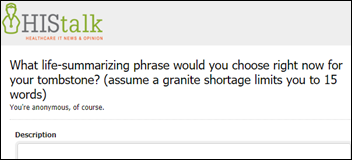












































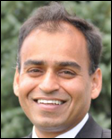























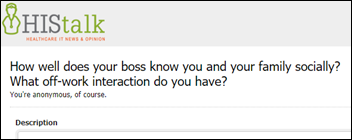



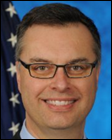





























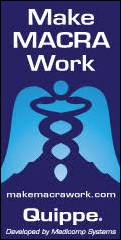




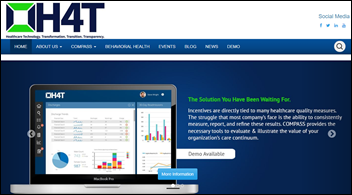


 e
e





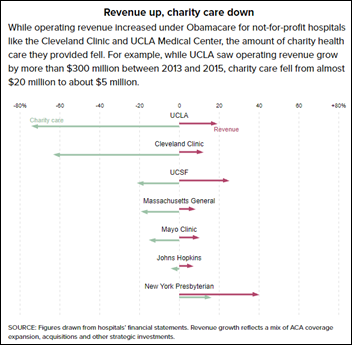



Anything related to defense will need to go to Genesis.